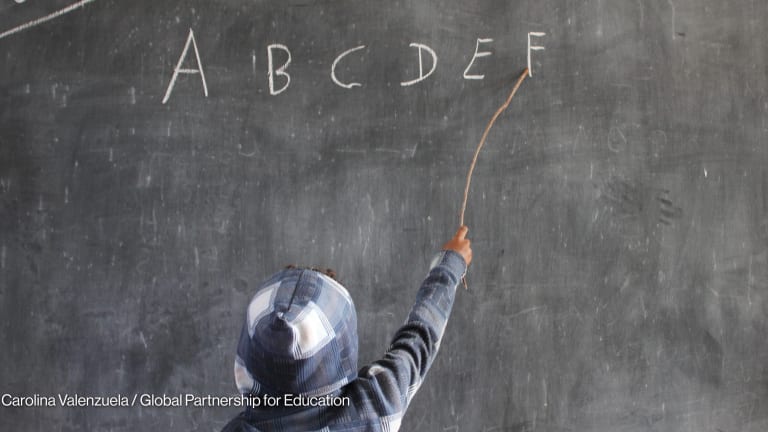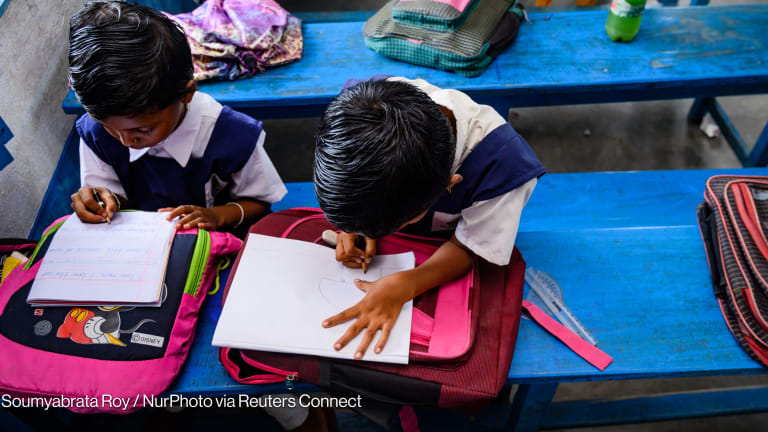
After the long and contentious debate over the content and aspirations of the post-2015 education targets comes to a close, we find ourselves at a crossroads and ask: How much will these ambitious targets actually cost? “Pricing the Right to Education,” our new paper out this week, shows that the proposed targets in education stand no chance of being achieved by 2030 unless substantial new funds are found.
Every year from now until 2030, on top of substantial increases in domestic financing in low and lower-middle-income countries, the Global Monitoring Report has calculated that we will need to find an additional $22 billion if we are to get all children into pre-primary, primary and lower secondary schools of good quality. This equates to almost a third of the costs each year for basic education in low-income countries.
See more stories on education:
● Julia Gillard's quest to ensure quality education for all
● 3 ways to improve education worldwide
● Top recipients of EU aid for education
● Education needs to be reassessed, refocused and redefined
We only have ourselves to take to task for this financing gap. The formulation of universal, ambitious and transformative targets in education has been the operative catchphrase. We have constructed a vision of a far better quality of education in the post-2015 era. This, combined with more children now projected to reach school than ever before, means that the cost of providing pre-primary and basic education each year is more than double what it was in 2012.
This conversation over financing turns high stakes for those meeting in July this year in Addis Ababa, Ethiopia, at the Financing for Development Conference. There, participants will discuss how much is needed to fund the new sustainable development agenda, and where those funds might come from. Our research shows that the amount spent per primary school student, for example, will need to grow from $65 to $199 per year by 2030 in low-income countries. These are substantial increases without which the ambitious education goal we have all fought to cement will fail.
The financing gap for education has always gaped large, and loomed larger as the years have passed from 2000 until today. As a result, 121 million children and adolescents have been left out of school, and millions more aren’t learning the basics. It would be imprudent, indeed short-sighted, to repeat the same terrible mistake again. If we do, and the finance gap from 2015 to 2030 is not filled, the new targets will be reached over 30 years too late, even if countries raise their efforts. Once again our promises to children and youths will have been broken.
Aid is only one, albeit an important, part of the puzzle. Having stagnated since 2010, donor aid to the poorest countries must increase at least fourfold to help countries seize this transformative moment and bring about the necessary gear change for the next 15 years.
And yet, the real onus of responsibility continues to fall on governments, which must assure good quality education for all their children. Without a finance goal in the new development agenda, we simply cannot assume that governments will meet their obligations. In order to help fill the finance gap, we calculate that low and middle-income countries must set themselves the target of spending 5.4 percent of their gross domestic product on education. They must be held to account for their contributions.
Cynics will argue that historically education has never pulled in enough funding and is unlikely to do so in the future. We must hope that those speaking up for the education sector in Addis Ababa this summer will remind them that $22 billion is equal to just 4.5 days of annual global military expenditure. Quality education is an issue of priorities, not of impossibilities.
The crossroads before us is asking us to weigh up our ambitions against reality. Pens will be put to paper this September. Before this happens, and not after, we must be sure that resources are there to enable each and every child on the planet to complete at least 10 years of education and acquire key skills for life and for work.
Join the Devex community and access more in-depth analysis, breaking news and business advice — and a host of other services — on international development, humanitarian aid and global health.








